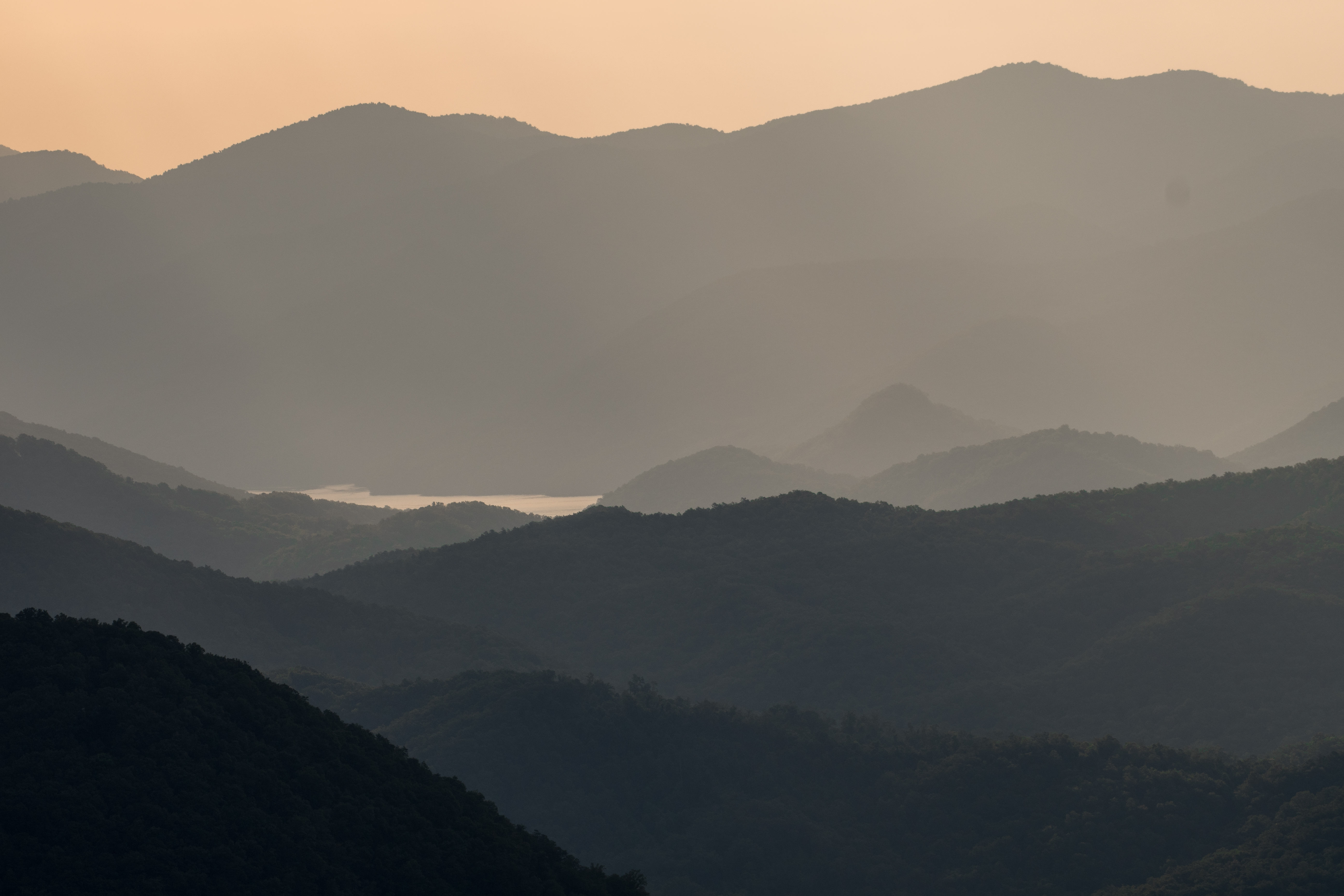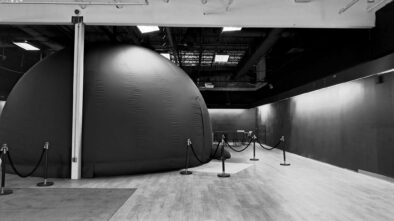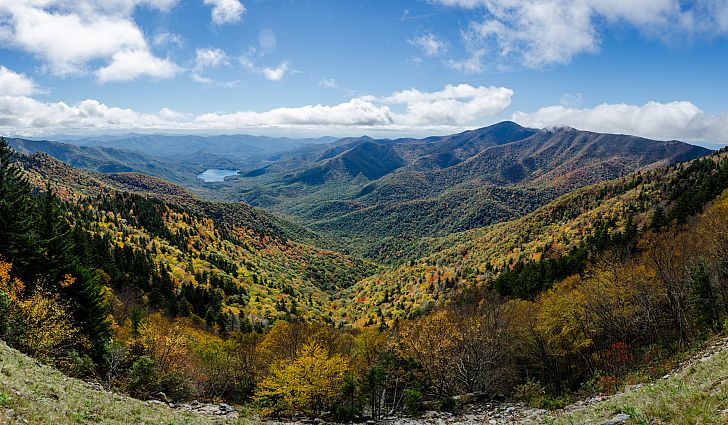South Carolina Road Trip: Symmes Chapel – A Spiritual Awakening in the Carolina Mountains
We live in a day and age where more and more we are seeking answers, spirituality and meditative release. We are bombarded by an explosion of news, social media, financial pressures and political turmoil.
Yet, hidden away in the Western Carolina mountains, in Cleveland, South Carolina is such a place where you can escape and get closer to the heavens. That place is Symmes Chapel.
This truly remarkable church is open to the peaks of mountaintops, sunrises, clouds and a place for spiritual rest or education. Some have found this on a journey, a wedding, retreat, rejoice or just to take in the breathtaking marriage of nature and religion.
Let us tell you a little bit more about this hidden gem in South Carolina located just 3 hours and 45 minutes from Charleston.
About Symmes Chapel
Known as “Pretty Place”, this chapel sits nearly 3000 feet above sea level with scenic views for miles. Fred W. Symmes gave the chapel to the YMCA Camp Greenville as a spiritual center for campers. The original construction was completed in 1941. Major upgrades were completed in 2012. The chapel is open every day beginning at dawn, making it a very moving place for a sunrise. Services are not regularly scheduled though, as this chapel is spiritual center for the YMCA’s camps, other retreats and conferences. It is also open to the general public

Information About Visiting
The chapel at YMCA Camp Greenville is called “Pretty Place” because of the breathtaking view from standing Stone Mountain. 5 miles off US Hwy 276 near Caesars Head State Park. Closed to the public during weddings and camp functions. Call ahead for closings.
- (864) 836-3291
- 4399 YMCA Camp Rd
- Cleveland, SC 29635
YMCA Camp Greenville History (Provided by CampGreenville.org)
Camp Greenville had its beginning in 1912 at a site near Cedar Mountain, North Carolina. About 25 boys attended August 1-15, under the direction of Charles J. Kilbourne, first physical director of the Greenville YMCA. In 1913 the campsite was at Glen Echo, near Brevard, NC, on the property of D. M. Hoke. There followed three 2-week seasons 1914 – 1916 on property of H. P. McGee and W. C. Hagood “on the bend of the West Saluda River just above Blythe Shoals,” where a permanent camp was established under the direction of Kilbourne, Charles Dushan (who succeeded Kilbourne as Y physical director) and John M. “Uncle Johnny” Holmes (General Secretary of the “Y” from 1914 to 1942) directed the camp in 1915 and 1916.

Due to complicating factors brought about by World War I, the Greenville Y had no summer camp for boys in 1917, but Camp Greenville was reborn in 1918 and continued at Blythe Shoals through 1924. One frame building served as kitchen, dining hall, infirmary, camp office, and recreation hall in inclement weather. Floorless army pyramidal tents provided shelter for 60 to 150 campers for as long as seven weeks in the later seasons. An active program of baseball, field hockey, hiking, river hiking, swimming, sliding on the shoals, and campfire programs and initiations provided summer fun, instruction, and inspiration for several hundred boys.
In 1920, Uncle Johnny and his Camp Committee began thinking about obtaining a campsite “higher up.” Mr. J. Harvey Cleveland persuaded the doubtful group to look at a site on top of the mountain beyond Caesar’s Head where, he assured them, there was ample water supply, enough level space for a large athletic field, a commanding view of the valley, and a waterfall 150 feet high. One look was all the visitors needed to convince them that this was the site they wanted. The original survey “for the Greenville YMCA Camp” is dated September 1, 1921. Mr. Cleveland donated 29 acres, including the site of Symmes Chapel or Pretty Place (also named Cleveland Cliff). Mr. T. C. Gower made several trips to Chicago to persuade the Saluda Land & Lumber Company to give 446 acres atop Standing Stone Mountain. The land was “given” to the camp as a perpetual trust with the stipulation that the land would revert to the company should it not be used as a resident camp.
After many months of land clearing, stump pulling, and construction involving new mountain friends, as well as countless old friends, Camp Greenville opened “On Top of the Blue Ridge” in 1925. Five frame cabins and nine tents sheltered the campers that first summer. When the quarters were filled, campers had to eat in two shifts in Geer Dining Hall, located where the Elks Gym is now. Within a few years, Uncle Johnny had a dream of a lodge dedicated to World Friendship. While he collected rocks and mementos (mostly by mail, through Rotary Clubs) from all over the world, the campers and leaders used a daily “service period” to collect native stone, out of which the Thomas F. Parker Lodge was constructed in the space of two years, being put into use in 1931. Uncle Johnny retired in 1944, having already selected the legendary “Monk” Mulligan to be Y Secretary and Camp Director.
Monk, whose service to Camp began years before the departure of Uncle Johnny, would serve in that dual role through the 1967 season. Luther Marchant, who would eventually succeed Monk as Camp Director, joined the “Y” and camp staffs in 1945. Luther Marchant, who came to Camp Greenville as a camper, became Monk’s right hand, serving as a staff member from 1945 to 1967, and directing the camp from 1967 to 1972.

Following Luther’s departure, a series of Camp Directors carried the camp through 1982: Stew Brown, Dan Hackney, Roy Tulp, and Trip Gore. In 1982 Marion Boatwright became camp director. Marion’s energy and talents revitalized the camp in several areas. Marion led a major renovation of the facility (Ridge Top cabins, dramatic improvements in the Dining Hall, construction of a High Ropes Course), and developed a quality Environmental Education program, making Camp Greenville a year-round operation. He also led the movement to make at least part of the summer at Greenville coed to the camp’s benefit. Marion resigned in 1988, leaving Camp a modernized facility with high quality program.
Greg McKee followed Marion after a period with Denise Turney as the interim director. 1990 – 1996 saw rapid increases in enrollment for all programs, especially summer camp. New facility projects have included the Mulligan Center, completed in 1994, which acts as a year-round program/conference center. In 1996, the Eugene and Linky Stone Health Center was completed as part of the Stone Torch Challenge to continue to upgrade YMCA Camp Greenville. Other additions in recent years have included:
- Gilpin-Cuthbertson Cabin – camper/guest cabin
- Symmes Cottage – staff housing unit
- The Standing Stone Outpost – camp store
- Complete renovations to the bathrooms in all three lakeside cabins
- League Pavilion at Lake Sudie
- Current and future improvements to the waterfront area at Lake Rotary – seating for guests and landscaping at Cleveland Point, the addition of a land and a water zip line in memory of former director Luther Marchant, and future improvements to the stone steps and seating at the Lodge
- The addition of a Bog Walk for nature classes at Lake Sudie
- Improvements to the trail systems
Camp Greenville will continue its time-honored tradition of outstanding service to others initiated by the likes of Uncle Johnny Holmes and Monk Mulligan.
Photo Credit: Paul M. Doughty of Charleston (www.instagram.com/paulmdoughty)


